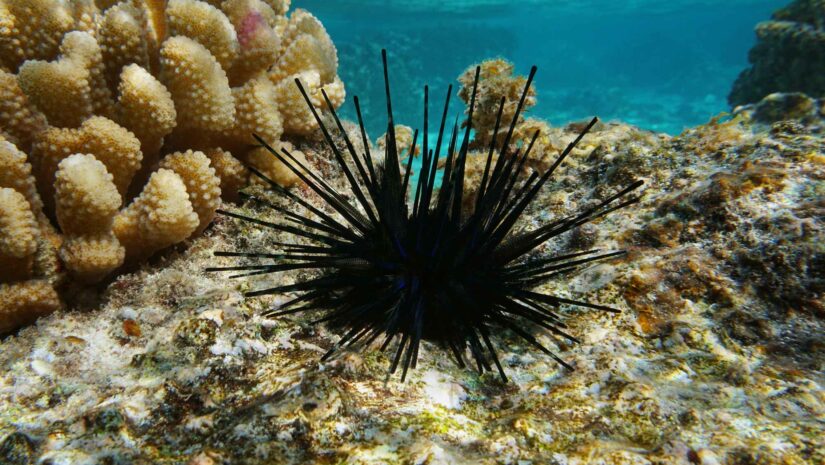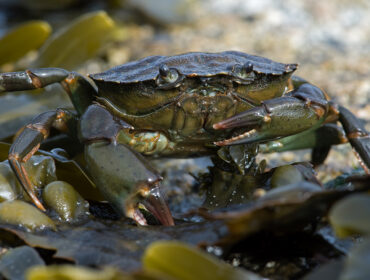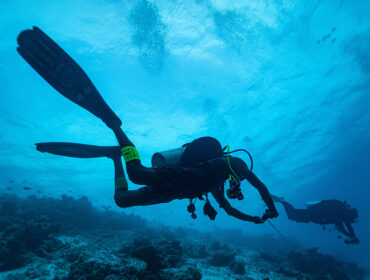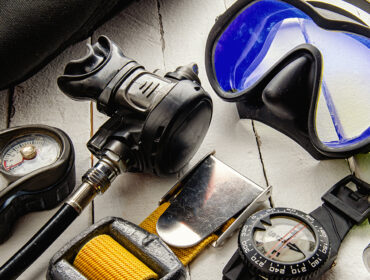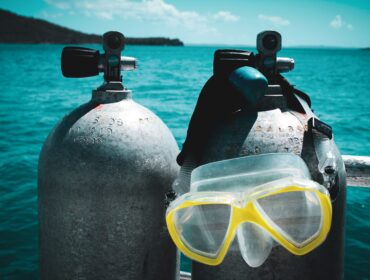“Take nothing but pictures, leave nothing but bubbles.”
While most divers know and respect this mantra, there are certain instances when unexpected or unavoidable immediate contact with marine animals can occur. Tide pools and intertidal zones are great places to observe marine wildlife, but they also present the risk of getting too close to something that can intentionally or inadvertently injure you—like the sea urchin.
Sea urchins are spike-covered spherical creatures that are usually just small enough to fit in the palm of your hand—they can measure around 1.2 to 3.9 inches in diameter. They also come in different colors, although the most common are black, brown, purple, red and green.
Are Sea Urchins Poisonous?
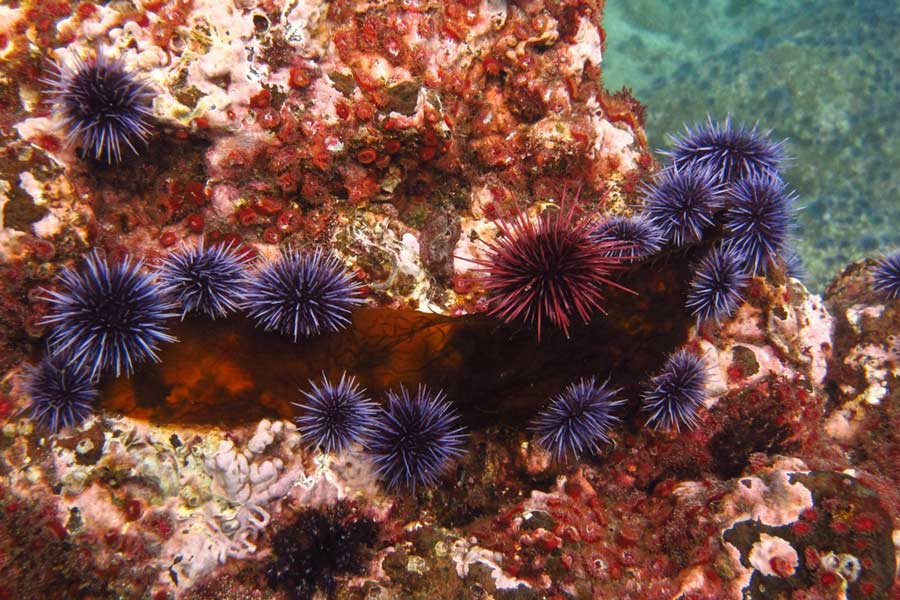
Sea urchins are related to “harmless” sea creatures like sand dollars, sea stars, and sea cucumbers. They are omnivorous creatures that only feed on very small plants and animals like seaweed, algae, plankton, and decaying organic matter. Their insides (gonads and roe) are actually considered a popular seafood delicacy.
Despite the fact that they aren’t considered dangerous, sea urchins do have a physical defense mechanism that can be harmful—their sharp spines, which are certainly hard to miss. These spikes, which cover nearly every inch of their bodies, serve as their first defense against predators. The spines themselves are not venomous, but they do have pedicellariae (small, claw-shaped jaws attached to the sea urchin’s shell) that bite and release painful venom to serve as their second defense system.
These features make sea urchins difficult for people to observe up close, so swimmers and divers should always be cautious when treading shallow waters where there are rocks, coral reefs, and hidden crevices.
How to Treat a Sea Urchin Injury

The main disadvantage of being impaled by a sea urchin, besides possible envenomation, is that the spines are very brittle and can be left embedded deep into your skin tissues. Some victims of sea urchin stings will have spines stuck beneath their skin long after the initial contact, either due to the difficulty of removal or indifference to their presence.
Sea urchin puncture wounds will often look bruised (blue-black in color). The area may also become swollen and reddish, plus it can get infected if the sting is not treated right away.
While a sea urchin sting is easily treated, it’s nothing to be cavalier about—do not ignore it. Multiple puncture wounds (especially deep ones) can be severe enough to cause intense fatigue, shock, paralysis, breathing problems, or even respiratory failure leading to death. Thus, it’s important to seek immediate medical attention if you’re unable to remove the spines yourself.
Here are some tips to remember when attempting to treat your own wounds:
Carefully remove the spines
It’s important that you immediately remove any spines that have gotten into your skin. If the spines are protruding enough that you can get a hold of them with tweezers or pliers, do so slowly and with care. If there are any pedicellariae, you can use a razor to gently scrape them out of your skin.
Some people are familiar with removing splinters with a needle and may find that method to be effective with sea urchin spines, but it is crucial that you sterilize the needle before you use it to dig into your flesh.
As previously mentioned, sea urchin spines are brittle and, like splinters, have the potential to break into pieces as you attempt to remove them. Take care not to crush the spine with your implement and use as steady a hand as possible.
Clean the affected area
Once you’re sure that you’ve removed all signs of the sea urchin from your body, it’s time to wash the area. Whether you use an antiseptic cleanser, hydrogen peroxide, or just good ol’ soap and water, it is very important that you clean the punctured area to avoid any risk of bacterial infection.
Use the hottest water you can possibly stand without scalding yourself and soak the affected area in it for about 20 minutes until your skin prunes. You can even add Epsom salt to boost the skin softening effect.
Soaking in hot water is advantageous for a few reasons: it helps manage the pain, keeps the wound clean, and will also enable easier removal of the spines because your skin will be more pliable. If you have been envenomed and are experiencing pain, a vinegar soak will help neutralize the toxins and relieve some of the discomfort.
Recovery and aftercare
For a couple of days after the removal of the spines, continue to soak the wound in hot water several times a day. Apply a topical antibiotic ointment like Neosporin on the affected area thrice a day after washing and drying the skin.
Topical hydrocortisone cream can also be used for any itching around the affected area.
You can also take over-the-counter pain medications like Advil (ibuprofen) and Tylenol (acetaminophen) if you are experiencing any pain.
Be sure to use fresh bandages to keep puncture wounds clean until they have healed.
Consider seeking medical help
If you have tried but failed to successfully remove the spines, see a medical professional as soon as possible. Remember that you should not attempt to do the removal yourself if you are dealing with deeply embedded or large spines, multiple or deep puncture wounds, or punctures near joints, as these may require surgical removal.
Also, call your doctor if you are experiencing increased pain; if the pain doesn’t go away after the fourth day; or if you see any signs of infection, like swelling, warmth, redness, and fever. Your doctor will either give you a full course of antibiotics that can be taken at home or have you admitted to the hospital to receive antibiotic treatment through an IV.
Being extra careful doesn’t always mean that you won’t get hurt or injured—especially when you’re in the ocean. It’s even possible to get stung by a spiky sea urchin even when you’re on the shore because some of them do end up on the sand, where people can accidentally step on them. What you need to remember is that it is important to have yourself treated immediately to avoid any serious complications like infections, spikes migrating deep inside your body, or other dangerous bodily reactions that can lead to more dangerous health risks.

